Daniel Strain
 Across the university, researchers are racing to find solutions to slow the rate of climate change and potentially reverse its course.
Across the university, researchers are racing to find solutions to slow the rate of climate change and potentially reverse its course.
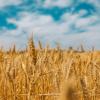 With the holiday season upon us and the United Nations Climate Change Conference, or COP28, kicking off this month, researchers launched Food Twin to show where crops come from—and how climate change could impact this fragile network.
With the holiday season upon us and the United Nations Climate Change Conference, or COP28, kicking off this month, researchers launched Food Twin to show where crops come from—and how climate change could impact this fragile network. Artificial intelligence tools should never replace human admissions officers, says CU Boulder scientist Sidney D’Mello. But new research suggests these platforms could help colleges and universities identify promising students amid mountains of applications.
Artificial intelligence tools should never replace human admissions officers, says CU Boulder scientist Sidney D’Mello. But new research suggests these platforms could help colleges and universities identify promising students amid mountains of applications. In the wake of a historic lawsuit filed against the social media giant Meta by more than 30 states, the ATLAS Institute’s Annie Margaret shares her take on how apps like Facebook and Instagram are affecting the mental health of young people. It’s not too late, she says, for people of all ages to build a healthier relationship with their smartphones.
In the wake of a historic lawsuit filed against the social media giant Meta by more than 30 states, the ATLAS Institute’s Annie Margaret shares her take on how apps like Facebook and Instagram are affecting the mental health of young people. It’s not too late, she says, for people of all ages to build a healthier relationship with their smartphones.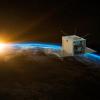 From rockets that reach the edge of Earth’s atmosphere to a historic journey to the moon’s South Pole, a landmark year for space exploration is coming for CU Boulder.
From rockets that reach the edge of Earth’s atmosphere to a historic journey to the moon’s South Pole, a landmark year for space exploration is coming for CU Boulder.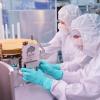 For more than 30 years, teams at the Laboratory for Atmospheric and Space Physics (LASP) at CU Boulder have emblazoned the image of the university's beloved buffalo mascot onto instruments destined for space. Follow Ralphie as she journeys from orbit around Earth to the rings of Saturn and beyond.
For more than 30 years, teams at the Laboratory for Atmospheric and Space Physics (LASP) at CU Boulder have emblazoned the image of the university's beloved buffalo mascot onto instruments destined for space. Follow Ralphie as she journeys from orbit around Earth to the rings of Saturn and beyond. The star TRAPPIST-1 sits roughly 40 light-years from Earth. It's barely bigger than the planet Jupiter, but it shoots out giant flares several times a day. New observations of these eruptions could help scientists detect atmospheres around a host of far-away planets.
The star TRAPPIST-1 sits roughly 40 light-years from Earth. It's barely bigger than the planet Jupiter, but it shoots out giant flares several times a day. New observations of these eruptions could help scientists detect atmospheres around a host of far-away planets.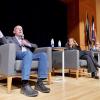 During a packed event, a panel of journalists and scientists called for removing the stigma around studying unidentified anomalous phenomena—such as strange blips that zoom across the instruments of fighter jets or even mysterious lights in the night sky.
During a packed event, a panel of journalists and scientists called for removing the stigma around studying unidentified anomalous phenomena—such as strange blips that zoom across the instruments of fighter jets or even mysterious lights in the night sky. Sky gazers in parts of the United States will see two solar eclipses in the next year, beginning with an annular, or "ring of fire," eclipse on Oct. 14. John Keller, director of the Fiske Planetarium, gives his take on what makes these events so exciting—and how you can observe them safely.
Sky gazers in parts of the United States will see two solar eclipses in the next year, beginning with an annular, or "ring of fire," eclipse on Oct. 14. John Keller, director of the Fiske Planetarium, gives his take on what makes these events so exciting—and how you can observe them safely.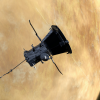 Venus is a distinctly unfriendly planet, with crushing atmospheric pressures at the surface and temperatures that hit 900 degrees Fahrenheit. But new observations from scientists at CU Boulder suggest that frequent lightning strikes may not be one of the planet's hazards.
Venus is a distinctly unfriendly planet, with crushing atmospheric pressures at the surface and temperatures that hit 900 degrees Fahrenheit. But new observations from scientists at CU Boulder suggest that frequent lightning strikes may not be one of the planet's hazards.


